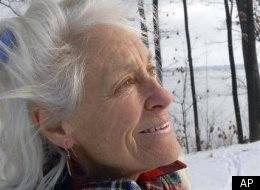
By MICHAEL VIRTANEN
Anne LaBastille, the environmentalist, sometime hermit and author whose "Woodswoman" autobiographies inspired others to venture into the wilderness, has died at a nursing home in Plattsburgh. She was 75.
The city clerk's office confirmed a death certificate was filed for LaBastille but would not re lease other details.
Friends said she was ill the past few years but still owned a farm near Lake Champlain, as well as the cabin that she and friends built on Twitchell Lake in the western Adirondacks.
Her autobiographies began with "Woodswoman," a 1976 account of cabin life on what she euphemistically called Black Bear Lake. It has sold more than 100,000 copies.
"Probably the most important thing is, she was a role model, an inspiration for a great many other women, young women," said Dick Beamish, a friend and founder of Adirondack Explorer magazine. "She had a devoted following, both male and female. I think she inspired a generation or maybe two of young women who love nature with what they could do with their lives, how to put it to good use, be independent and not live in the shadow of husbands or others."
LaBastille wrote a dozen books, as well as articles and essays for National Geographic and other magazines. She cut a striking figure with long blonde, later white, hair and often was accompanied by her German shepherds.
Born in Montclair, N.J., in 1935, LaBastille earned a Ph.D. from Cornell in wildlife ecology. She was married for several years to Major Bowes, proprietor of Covewood Lodge on Big Moose Lake, where she worked.
LaBastille was a commissioner of New York's Adirondack Park Agency for 17 years, with an unpaid seat on its board from 1975 to 1993. The APA regulates land use in the 6-million-acre Adirondack Park.
"We always knew she was going to vote for protection. No matter what the project was or the issue was, she would always come down on the side of protecting nature," said Beamish, who worked for the agency early in her tenure. "She was reviled for that by those who didn't believe in the APA or who didn't believe that the APA should be telling people what they can or can't do with their land. For them, she was seen as the worst of the APA. For a lot of people she was the best of it."
Bowes recalled that the cabin, which had no road leading to it, was built too close to the lake, a land-use violation that prompted a neighbor to complain. Friends slid logs underneath it and inched it back in a rainstorm, while LaBastille worked away at her typewriter inside.
APA Chairman Curtis Stiles said LaBastille's legacy included helping international organizations establish nature parks in other parts of the world. She was one of the first people to attract national media attention to acid rain deposition in the Adirondack watershed, he said.
In a 2007 interview with The Associated Press, LaBastille said the environmental and feminist movements began around 1970, but her interest in nature and science studies at Cornell began earlier. "That was the best thing in my life," she said. "I was studying biology and ornithology and all of the things that could be taken in with nature. On the back of that … I was going to be some kind of explorer, and it came true more or less."
Her thesis research was the ecology of the giant pied-billed grebe, a flightless bird that was then found only at Lake Atitlan in the Guatemalan highlands and now is extinct.
Article courtesy of huffingtonpost.com

